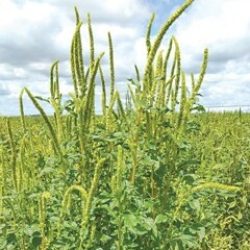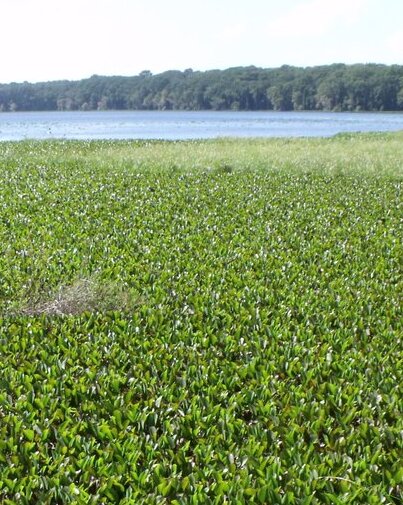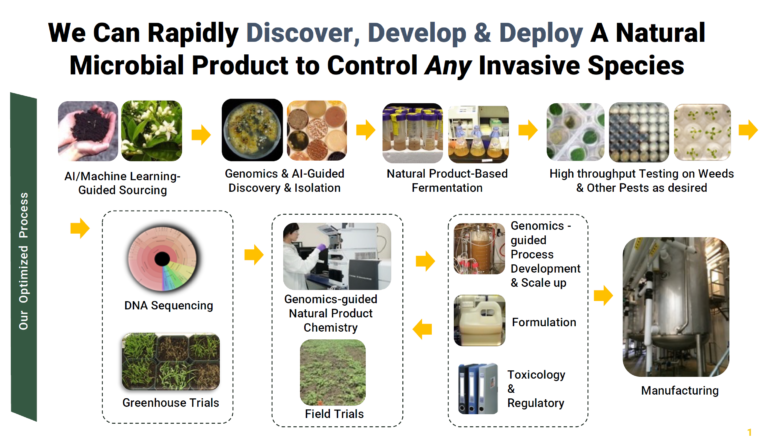Terrestrial and Aquatic Weeds
Terrestrial and Aquatic Weeds Can Harm Natural Habitats and Ecosystems
In the US alone, invasive weed damage costs exceed $30B/year and cover 100,000M acres – about the size of California. Weeds have evolved to be resistant to 21 of the 31 known herbicide sites of action. The global herbicide market is $43B/year.
What is it? Weeds in waterways and on land that are considered undesirable in a particular situation, are growing where it conflicts with our preferences, needs, or goals. They can be be a nuisance, destructive, and difficult to manage.

Bioherbicide Discovery
- The biggest unmet market need is for bioherbicides (<$100 million sold today)
- New products would drastically increase organic food production
- Huge potential for bioherbicides with cost and spectrum that can compete with chemicals
The Problem
- Rapid Increase of Herbicide-resistant Weeds:
- Invasive weeds in US cover 100M acres — the size of California
- Every day, an additional 4,500 acres in the US is covered by invasive weeds
- There are more than 530 cases of weed resistance including 272 species of weeds are resistant to chemical herbicides. 100 crops in 72 countries are now vulnerable and growing (Heap, I. The International Herbicide-Resistant Weed Database).
- Lack of innovation in this $32B market: no new herbicidal mode of action has been launched in over 30 years
- Lawsuits & Bans:
- Major chemicals now face lawsuits & multibillion dollar jury awards
- Major herbicides have been banned or restricted in many countries (some in 50 countries) including the US
- Consumer backlash: end-users are actively seeking bio-alternatives

- Carbon Footprint:
- Synthetic chemical pesticides can have significant carbon/greenhouse gas emissions impact, biologicals can have 90% less impact than chemicals
- Lack of Cost Effective and Broad Spectrum Bioherbicides
- Today’s bioherbicides have made limited impact in the market as they are too expensive, are typically burndown and have to be reapplied, and do not have broad efficacy.
Current Status of Our Solution
Given that invasive and herbicide-resistant weeds have become a large and increasing problem, our goal is to develop an environmentally friendly and cost-effective biological herbicide with a new mode of action.
We have two parallel lines for finding a new bioherbicide:
AI/ML-Aided Discovery
- We apply machine learning enabling search of databases for bioherbicides meeting our specified parameters
- We find microbes that produce higher titers and desirable traits of herbicidal compounds
- Search for genes that produce compounds to aid synthetic biology approaches
In-House Bioprospecting
Harnessing our deep experience:
- Types of habitats and samples
- Sample handling
- Unique isolation & fermentation media
- Novel bioassays
- Utilize novel formulation technology
- Led by natural product chemistry (better efficacy, stability, spectrum)

